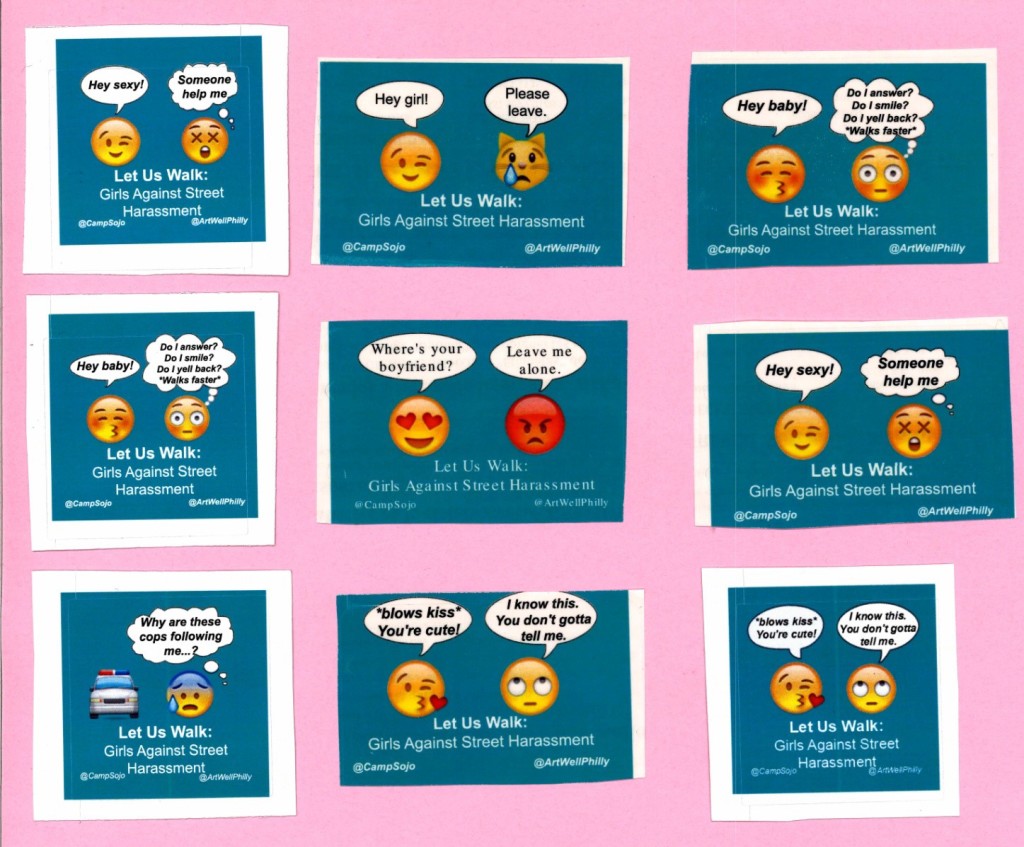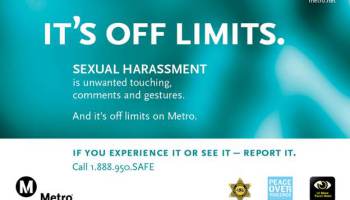This is an excerpt from the Art of Growing Leaders 2015-16 Highlights, shared with their permission:
“The Art of Growing Leaders [in Philadelphia, PA] introduces young people ages 10-14 to multi-cultural rites of passage traditions, and provides them with creative leadership skills to help them discover their strengths and bring them to their communities. In the culminating project, students embarked on one specific creative social action project to improve their school/community.
Young women from Camp Sojourner, Girls’ Leadership Camp participated in ArtWell’s The Art of Growing Leaders and created this public guerilla art project to speak out against street harassment. Students designed stickers and gave them out and spoke with hundreds of people on April 30 at the Sojourner Truth Walk in West Philly, sparking important conversations. One parent told us this topic was not appropriate for her child, as she was too young and had not experienced harassment, only to be corrected by her daughter who told her mother that she was no stranger to being harassed. This led to a dialog and new awareness between this mother and her daughter. We are proud of these young women in creating such a powerful,
straightforward, and important project.“




